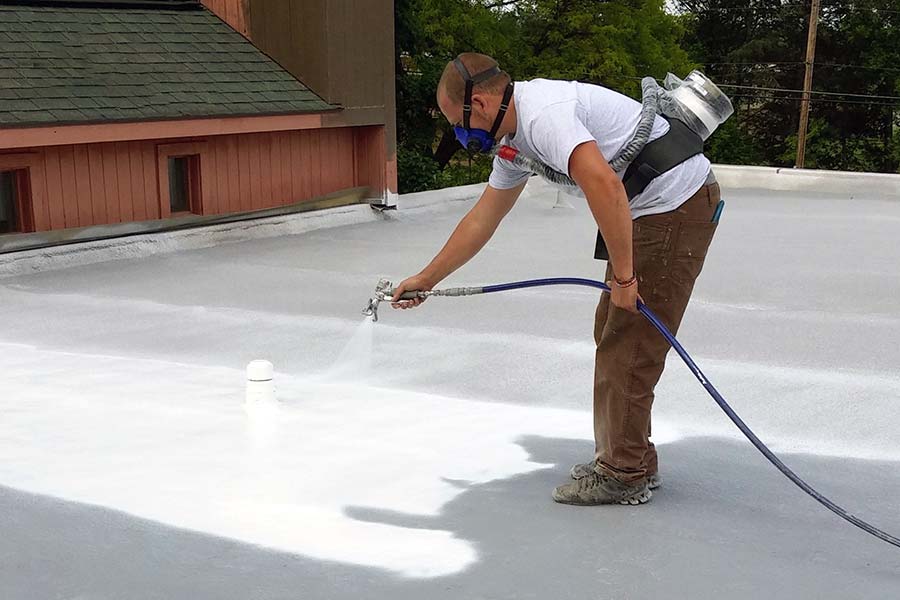How DP Framed Isabel Sandoval’s New York Love Story
Isabel Sandoval’s “Lingua Franca” is a visually gorgeous drama from the auteur filmmaker who also stars in the film, now streaming on Netflix.
Sandoval plays Olivia, an undocumented Filipina trans woman who spends her days working as a caretaker for Olga (the late Lynn Cohen). Set in Brooklyn’s Brighton Beach, the film delights in the unsaid with moments of silence adding to the emotional impact as Olivia soon finds herself in a relationship with Olga’s grandson, Alex.
The New York of “Lingua Franca” is not the familiar setting — it’s a Russian-Jewish neighborhood that Sandoval and her DP Issac Banks spent time scouting, looking for the perfect location.
Banks made his feature-length film debut with a style that lingers on interior shots, framing Olivia’s safe space and presenting the images in a picturesque way. When she leaves the safety of home, Banks composes beautiful shots but makes the viewer absorb her anxiety as ICE patrols her neighborhood.
Banks talked about working with Sandoval, their collaboration on framing the film’s visuals and how he lensed the film’s important love scene.
Brighton Beach is the perfect location for this film. What were some of the conversations you had about the location and visual influences?
Isabel and I have been friends for over six years and that whole opening sequence was scripted by her. We had a lot of time to scout the Brighton Beach area where the film is set and get a feel for all those opening shots.
Isabel gave me a lot of films that she had to gravitate to in terms of the film and the tone which helped with what our approach would be. “In the Mood for Love,” by Wong Kar-wai was one, and the other was Chantal Akerman’s “News from Home.”
One of the main conversations we had was in regards to lighting and naturalism, and that was the most important facet when we were establishing the film’s visual language from the get-go.
What were some of the cameras and filters you used to achieve that naturalistic look?
The film was a really low budget one, shot over 16 days with some pickup days. Most of our locations and lighting were dependent on the resources that we had and making the best of what we had.
We used Panavision Primo lenses. They’re older lenses and have a real look to them and they’re ground in the natural world. What I love about them is they reflect the natural color that we were seeking for the look and feel of the film.
The silent moments of the film are so powerful and your camera movement is almost a slow dance. What discussions did you have about framing those moments?
Isabel and I established that we wanted minimal coverage, and that was very important to us. We chose to frame where you were able to tell the entire story within those shots. The idea was again was to have everything grounded in this naturalistic and real way.
We took the approach that the framing would be from an observational perspective, but not too intimate.
I also had restraint. When it came to shooting the interiors, I wanted to show it as a safe place for Isabel’s Olivia. When we were shooting exteriors, we wanted to create a drastic difference. That wasn’t supposed to be too intimate, I think. Whereas our exteriors, we really work to try to create a tone of an individual who was being observed. [She’s undocumented and a trans woman] so, we wanted to frame her in those exteriors to make it feel like she was being hunted.
The love scenes were shot so beautifully, this stunning trans woman gaze that focused on her face and the emotion of it all. It never once felt gratuitous, but sensual. What was your approach to filming that sequence?
We filmed that on our first day. That was the first time Isabel had ever done a love scene and we decided to hold the shots for a lot longer to capture what that sexual experience was for her and from that perspective of the female gaze.
I had a handheld for the actual sex scene and used a trip for the dream sequence. We wanted to be muted and sensual. The intention was those scenes would be sexy. If you had no idea about the film and you saw that scene, you would find it very appealing.
That final scene with Olga in the kitchen was so beautiful and the framing.
That’s one of my favorite shots as she walks into the close-up. We played that scene out in one continuous shot. There’s a subtle camera movement at the end, but the goal here was to capture how alone she was. The framing here was extremely intentional in that it reflected this elderly woman’s movements in this space and we wanted to capture how alone she was.
More from Variety
Best of Variety
Sign up for Variety’s Newsletter. For the latest news, follow us on Facebook, Twitter, and Instagram.






